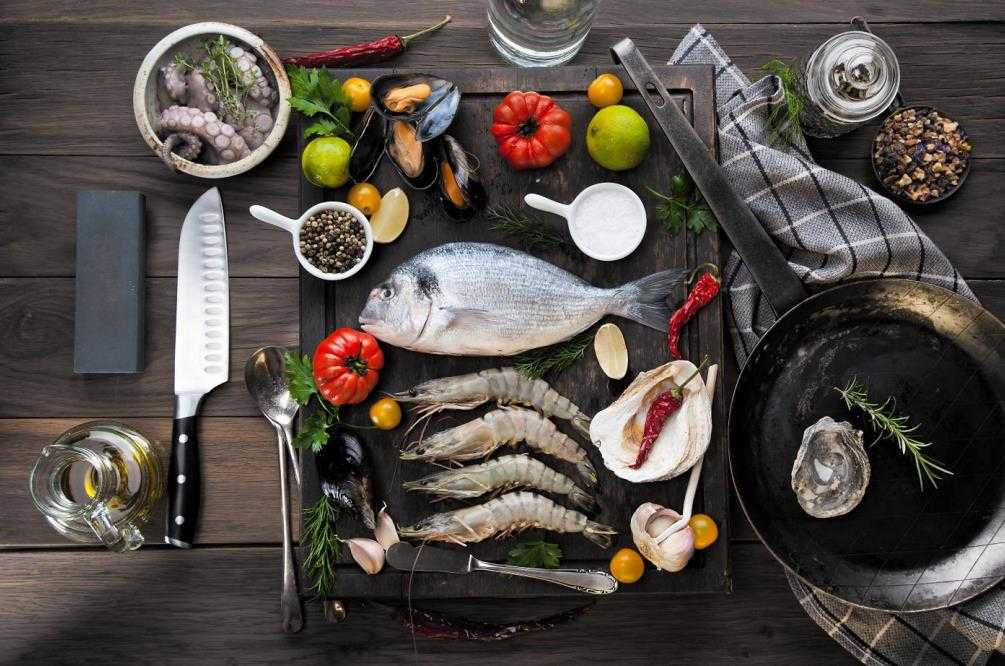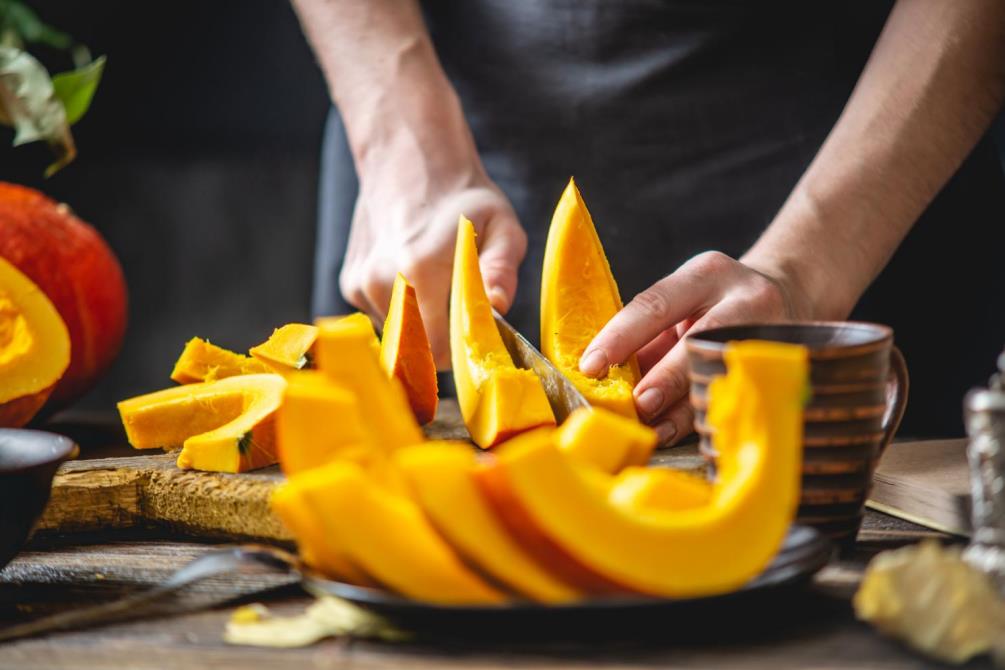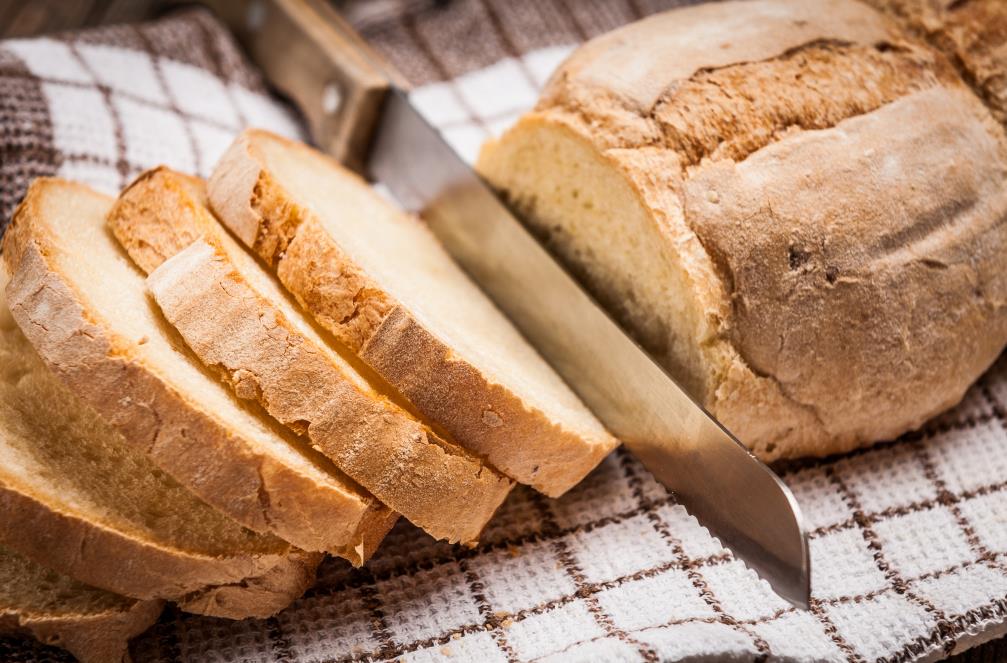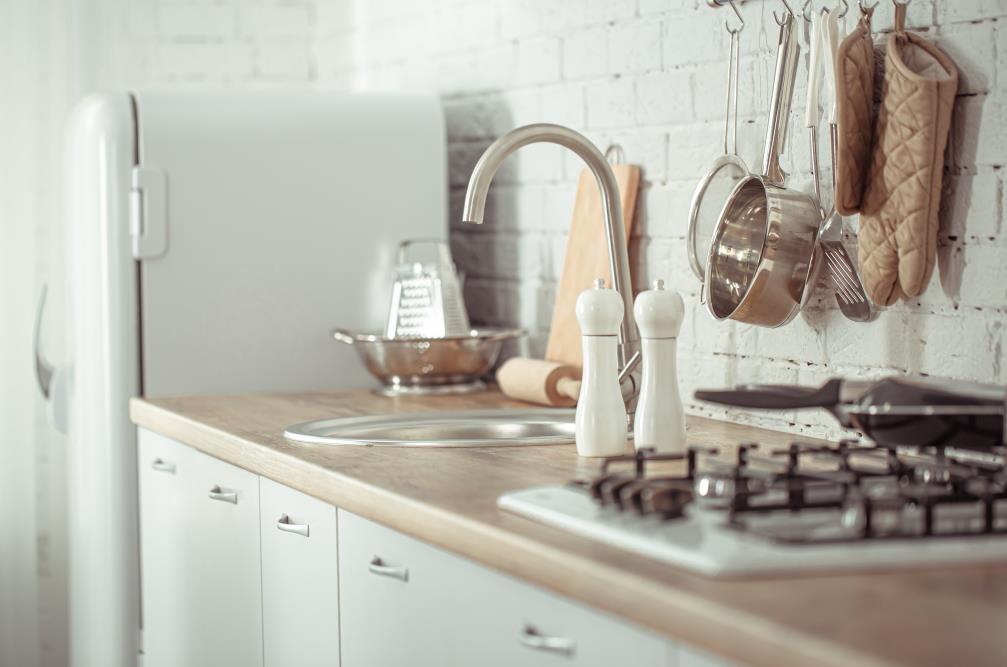Sometimes back, knife blocks took pride of place on countertops, with ten or more knives of varying sizes and shapes. However, modern homeowners and cooks are on a downsizing trend. Minimalism is in, which means having fewer knives and using them for multiple tasks. So, how many knives do you really need?
You only need three knives in your kitchen – a chef’s knife, a paring knife, and a serrated knife. It may come as a surprise to many, but the versatility of these three knives covers most of your kitchen’s chopping, slicing, and dicing needs. While extra knives may provide convenience for advanced tasks, they are unnecessary for the average cook.
Are you struggling to part with your extra knives? This article covers the three essential knives in detail and their many uses. You’ll also find information on choosing each type of knife and some necessary kitchen accessories worth considering.
Table of contents
Chef knife
Ever versatile, a chef knife is the workhorse of the kitchen. Depending on the design, a chef’s knife can range from 6–14 inches. Most feature a broad blade that tapers to a sharp point with a straight or slightly curved edge. A chef knife is widest across the heel, which provides ample knuckle clearance when slicing through large fruits and vegetables.
What can you do with a chef knife?

There’s no end to the tasks you can accomplish with a chef knife. Well, almost. If history has it right, the original design of the chef’s knife was for slicing and disjointing large cuts of meat. Today, it’s the go-to knife for almost all kitchen prep work.
With its broad blade and sharp edge, the design gives you the power to chop through tough vegetables like squash easily. It’s also the best knife for mincing garlic and herbs.
Need to make quick work of a pile of carrots? Slice them into thin disks using a chef knife. Craving a ripe melon? Use a chef knife to slice off perfect wedges. A chef’s knife can also handle larger tasks such as carving a roast chicken or turkey. The broad blade provides stability, while the sharp edge ensures clean cuts.
Other uses of a chef knife include:
- Portioning cuts of meat
- Butterflying chicken breasts
- Slicing fish fillets
- Dicing onions and other vegetables
- Crushing garlic cloves
- Slicing cheese
- Deveining shrimp
How to choose an all-purpose chef knife
You can’t just pick up any chef knife and hope for the best. With the vast array of shapes, sizes, and materials available, it’s essential to know what to look for when choosing a chef knife. In particular, an all-purpose chef knife since it will be your go-to kitchen tool.
Here are some factors to consider:
- Size: While a 6-inch knife is ideal for smaller hands, those with larger hands may feel more comfortable using an 8- or 10-inch blade. Finding a size that feels good in your hand and provides ample clearance over the cutting board is critical. Ideally, you want a chef knife size that strikes a balance between precision and power.
- Blade material: For an all-purpose chef knife, you want blade material with excellent edge retention like high carbon steel. It should be easy to sharpen and maintain a sharp edge.
- Handle material: The knife handle material you choose should be comfortable and provide a secure grip, even when your hands are wet. Wood, bamboo, and plastic are all popular handle materials. Most chefs recommend wood because it’s comfortable and has a classic look.
- Full tang or partial tang: A full tang knife has a blade that extends the entire length of the handle, whereas a partial tang only extends partway. For an all-purpose chef knife, choose a full tang for better stability, durability, and balance.
Handpicked for you
True cutting power in the palm of your hand
Paring knife
A paring knife is a small, versatile knife with a short blade that tapers to a sharp point. It’s typically 3–4 inches long with a straight or slightly curved edge. The knife’s small size makes it perfect for intricate tasks that require more precision, such as removing the core from apples or cutting small vegetables.
What can you do with a paring knife?

The two most basic uses of a paring knife are slicing and peeling fruits and vegetables. But that’s just the tip of the iceberg. While the blade is small, it’s mighty and can perform various tasks. You can also use a paring knife to dice, chop, julienne, or mince small foods.
Below are some other popular uses for a paring knife:
- Seeding and slicing chilies
- Deveining shrimp and prawns
- Cutting small fruits and vegetables
- Shucking oysters
- Peel, core, and slice apples
- Hulling strawberries
- Testing meat tenderness
- Removing the rind from citrus fruits
- Carving decorative garnishes
- Cleaning and cutting small fish
Although a paring knife is a multipurpose knife, it’s important to note that different paring knives exist, and some suit some tasks better than others. For example, a bird’s beak paring knife is an excellent choice for coring fruits, trimming, and shaping vegetables. Meanwhile, a sheep’s foot paring knife makes better julienne cuts. Other paring knives include the western-style Japanese paring knife and spear-point paring knife.
How to choose a paring knife
Ideally, the blade should be long enough to handle most peeling, slicing, and paring tasks but short enough to maneuver easily. A 3- or 4-inch blade should suffice. Consider one with a pointy tip as it ensures more precision when working on intricate tasks.
Serrated knife
Beyond the all-purpose chef knife and paring knife, the third and last knife every home cook needs is a serrated knife. As the name suggests, this knife has a toothed or jagged blade edge. These ridges minimize the pressure on the blade, so it can slice through tougher foods without crushing them.
Serrated knives work like a saw, essentially “catching and ripping” their way through foods with a tough exterior and soft interior. These serrations vary in appearance. Some can be wavy, others micro, and others scalloped. Some manufacturers combine different types of serrations to create a unique blade edge.
When using a regular chef knife, there’s a substantial amount of pressure on the blade, which can cause it to crash or tear through certain foods. But with a serrated knife, the blade can “saw” its way through these tougher foods without squishing or shredding them.
What can you do with a serrated knife?

A serrated knife is ideal for slicing through foods with a hard exterior and soft interiors. There’s no better example than bread. Have you ever tried cutting a loaf of bread with a regular chef’s knife? If so, then you know how difficult it can be.
The blade tends to squish the bread, resulting in uneven and gummy slices. But with a serrated knife, you can get neat and clean slices without fuss.
Other popular uses for a serrated knife include:
- Slicing tomatoes
- Cutting sandwiches
- Slicing through cured meats like salami
- Slicing a layer of cake
- Cutting through crusty bread
When looking to buy a serrated knife, there are three things you should keep in mind. Consider the length of the blade, the material, and the handle.
Ideally, you want a knife with a long blade. Most range from 8 to 10 inches, but some can be as long as 14 inches. The longer the blade, the easier it is to slice through large loaves of bread and cakes. As for the material, consider a flexible blade. A serrated knife with a flexible blade can contour to the shape of the food, making it easier to slice through.
The handle isn’t just an aesthetic consideration. It also plays a role in comfort and grip. Wood, plastic, and composite handles are the most common. Some come with an ergonomic design for added comfort.
Other knives for advanced needs
Once you have the three essential knives, you can start to branch out and add to your collection based on your specific needs. Here are some other popular knives that can be useful for certain tasks:
- Cleaver: A cleaver is a large knife with a rectangular blade. The design and shape of the blade make it ideal for chopping through bones and dense meats. While it’s not an essential knife, it can be useful if you do a lot of cooking with meats.
- Boning knife: As the name suggests, chefs use a boning knife to remove the bones from meat. It has a sharp, curved blade designed to contour around the bone. If you eat a lot of chicken, fish, and other meats, then you might want to invest in a boning knife.
- Utility knife: A utility knife is a versatile all-purpose knife. It’s similar to a chef’s knife but smaller and more compact. Utility knives are perfect for slicing fruits and vegetables, cutting meat, and even mincing garlic.
What are the necessary kitchen accessories?

In addition to knives, you should consider a few other kitchen accessories. Some of these are must-haves, while others are nice-to-haves.
Knife sheath
A knife sheath is a must-have if you want to keep your knives in good condition. It’s a protective cover that goes over the blade. It not only protects the knife from getting nicked or damaged, but it also protects you from accidentally cutting yourself.
Sharpening stone
A sharpening stone is essential for keeping your knives in top condition. Over time, the blades will become dull and will need sharpening. A sharpening stone is a block of material (usually stone) with an abrasive surface. You can sharpen the blade and restore its original edge by grinding it against the stone.
Honing rod
A honing rod is a type of steel that helps keep your knives sharp. It’s not as abrasive as a sharpening stone, so it won’t remove any metal from the blade. Instead, it smooths out the blade and realigns the edge. When used regularly, a honing rod can help extend your knives’ life.
Cutting board
A cutting board is a flat surface where you do the actual cutting. It’s essential to have a good cutting board to protect your knives and countertops. Wood and plastic cutting boards are the most popular. Some feature a groove around the edge to catch juices and prevent them from dripping onto the counter.
Knife block
A knife block is a storage solution for your knives. It’s a wooden block with slots or holes of different sizes. You insert the blade of the knife into the appropriate slot. Knife blocks help protect your knives and keep them within easy reach.
Closing
The three essential knives for any kitchen are a chef’s knife, a paring knife, and a serrated knife. Having these three knives will allow you to complete most kitchen tasks. If you have more specific or advanced needs, you may want to invest in other knives, but these three will suffice for most people. In addition to knives, you’ll also need a sharpening stone, honing rod, and knife sheath to keep your knives in good condition.
Our store offers a great selection of knives and knife accessories that will change how you feel about cooking. With the right tools, cooking can be a fun and rewarding experience. Visit our blog for more tips on choosing the right knives for your kitchen.












